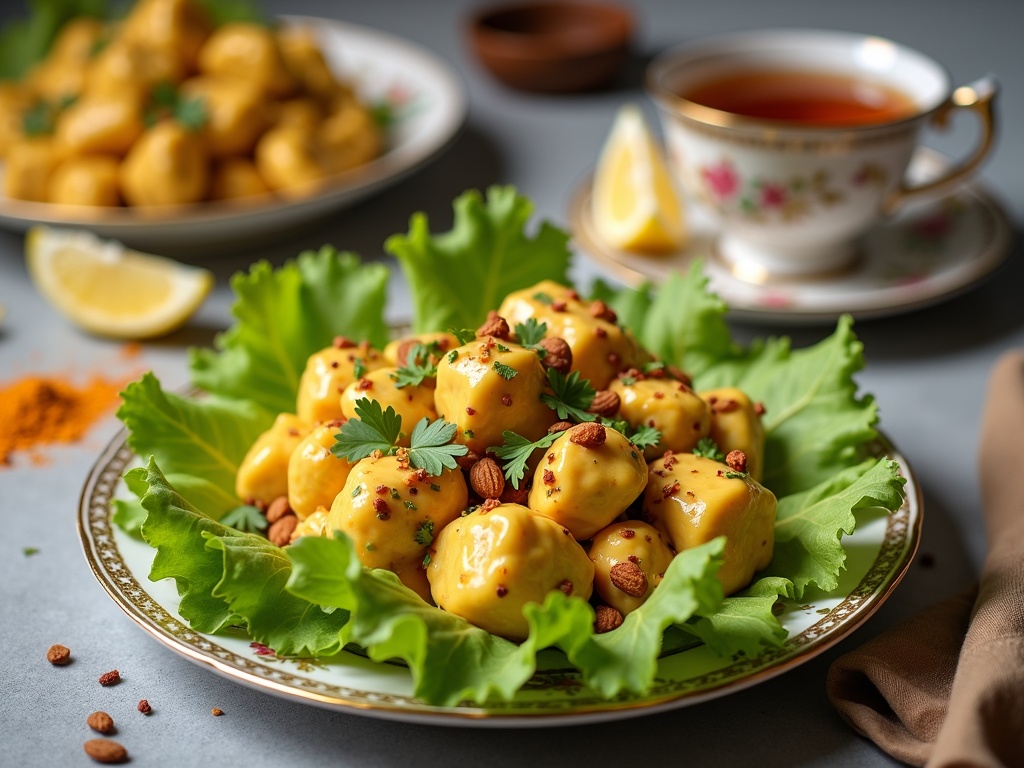Coronation chicken recipe, a dish created specifically for Queen Elizabeth II’s coronation banquet in 1953, represents a clever fusion of British and Indian culinary traditions developed by chef Rosemary Hume and Constance Spry. This iconic recipe emerged during post-war Britain when the country was still under food rationing, yet managed to combine practical ingredients with exotic flavors to create a sophisticated dish that could be prepared in advance and served cold.
Find In This Article
Key Takeaways
- Coronation chicken was specifically created for Queen Elizabeth II’s coronation in 1953 by chef Rosemary Hume of Le Cordon Bleu cooking school in London.
- The dish combines British culinary traditions with Indian flavors, featuring curry powder, mayonnaise, yogurt, chicken, and sweet elements like raisins or apricots.
- The recipe was designed to overcome post-war rationing constraints while creating something sophisticated enough for a royal celebration.
- For authentic flavor, the dish requires cooked chicken, mayonnaise, yogurt, mild curry powder, and sweet elements balanced with lemon juice.
- Coronation chicken has evolved from a royal banquet offering to a versatile British staple that appears in sandwiches, salads, and as a standalone dish.
A Royal Dish Born for a Queen
I can trace coronation chicken back to one of the most momentous occasions in British history. This iconic dish wasn’t just any recipe—it was specifically created for Queen Elizabeth II’s coronation banquet in 1953. The coronation marked a new era for Britain, emerging from the hardships of World War II and rationing, and this dish perfectly captured that spirit of renewal and celebration.
The creative genius behind this royal offering was Rosemary Hume, a distinguished chef from Le Cordon Bleu cooking school in London. Working alongside Constance Spry, a notable florist and author, Hume developed a dish that would be practical yet sophisticated enough for this historic event. They faced a unique challenge: creating something that could be prepared in advance and served cold to hundreds of distinguished guests.
What makes coronation chicken truly special is its clever fusion of culinary traditions. The dish beautifully marries traditional British elements with Indian flavors, reflecting Britain’s historical connection with the subcontinent. This wasn’t accidental—it represented a forward-thinking approach to British cuisine at a time when exotic ingredients were becoming more accessible.
A Culinary Symbol of Post-War Britain
The creation of coronation chicken went beyond just feeding royal guests. It stood as a symbol of British culinary innovation during the post-war era. In 1953, Britain was still under food rationing, which had been in place since 1940. Creating a luxurious dish under these constraints was no small feat.
The genius of this elegant chicken recipe lies in its clever combination of available ingredients with exotic flavors:
- Poached chicken provided a practical protein base that could be prepared ahead
- Curry powder introduced warm Indian spices at a time when Britain was embracing more international flavors
- Mayonnaise and cream created richness despite dairy limitations
- Apricots added a sweet element that balanced the spices perfectly
- Almonds contributed texture and elegance to elevate the dish
The dish quickly captured public imagination after the coronation. It represented a fresh start—combining traditional British cooking techniques with international influences. This beloved chicken dish signaled the beginning of Britain’s exploration of more adventurous flavors and ingredients.
I find it fascinating how coronation chicken has evolved over the decades while maintaining its royal connection. From high-end banquets to everyday sandwiches, it’s transformed into a beloved staple of British cuisine. What began as a solution to a specific catering challenge has become a cultural touchstone, appearing on menus across Britain and around the world.
The dish continues to be reimagined by chefs today, with modern variations incorporating new ingredients while honoring its origins. Its enduring popularity speaks to how successfully it captured something essential about British food—practical, adaptable, and open to global influences while remaining distinctly British at its core.
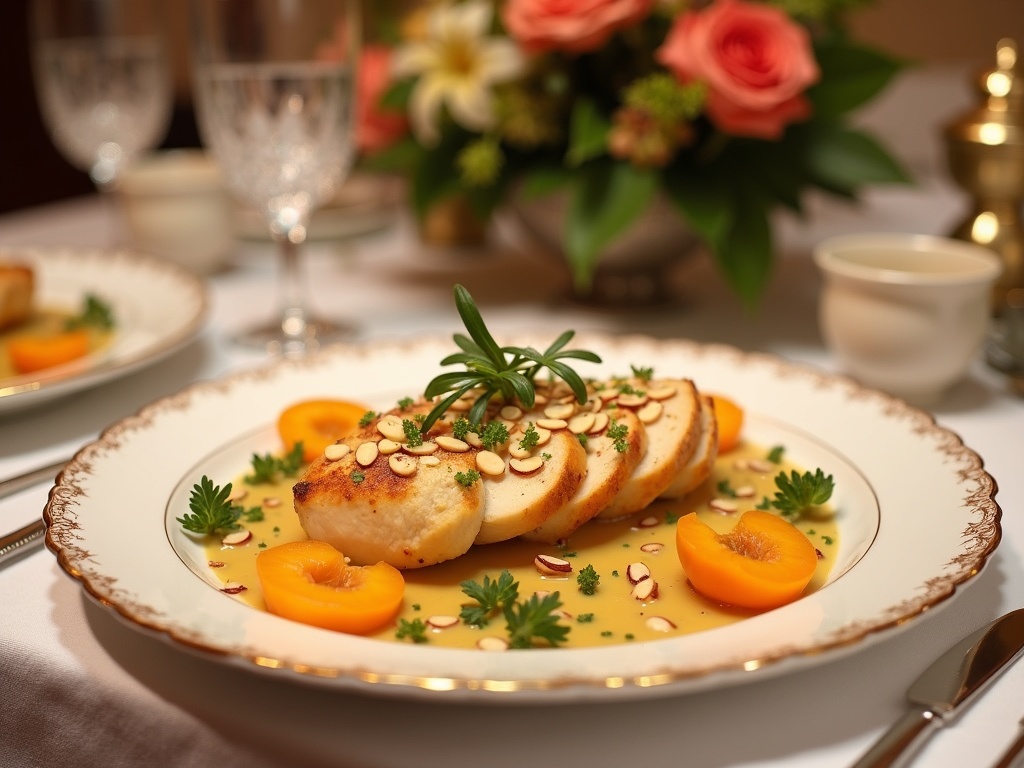
Essential Ingredients for the Perfect Coronation Chicken Recipe
I’ve found that creating a delicious coronation chicken starts with gathering the right ingredients. This creamy, mildly spiced dish has become a classic for good reason – it’s versatile, flavorful, and can be prepared in advance for special occasions or simple chicken meals at home.
Key Components for Authentic Flavor
The foundation of any good coronation chicken is, naturally, the chicken itself. I prefer using 500g of cooked chicken, either freshly poached or a quality rotisserie chicken torn into bite-sized pieces. The chicken should be cooled before mixing with other ingredients to maintain the ideal texture.
The distinctive yellow-hued sauce requires 200g (about ¾ cup) of mayonnaise as its creamy base. This provides richness while carrying the curry flavor throughout the dish. For authentic results, I combine this with 100g (½ cup) of natural yogurt, which adds tanginess and lightens the overall consistency of the chicken preparation.
The signature flavor comes from 2 tablespoons of mild curry powder. Don’t be tempted to use hot varieties unless you’re certain your guests enjoy spicy food – the original recipe calls for a gentle curry note rather than intense heat.
Sweet elements balance the savory components perfectly. I add 100g (½ cup) of plump raisins or sultanas, which provide bursts of sweetness and interesting texture. Their natural fruitiness complements the curry beautifully in this classic chicken recipe.
Finally, 1 tablespoon of fresh lemon juice brightens all the flavors and cuts through the richness of the mayonnaise. This acid element is crucial – without it, the dish can taste flat or overly rich.
For the best results, I recommend these additional tips:
- Allow time for the flavors to develop by making coronation chicken at least 2 hours before serving.
- Use the highest quality mayonnaise you can find – it makes a noticeable difference.
- Toast curry powder in a dry pan for 30 seconds before cooling and adding to the mixture.
- Add a handful of toasted almonds or fresh herbs like cilantro just before serving.
- Serve chilled but not freezing cold to appreciate the full flavor profile.
This delicious chicken dish works beautifully as a sandwich filling, jacket potato topping, or elegant starter when served with crisp lettuce leaves.
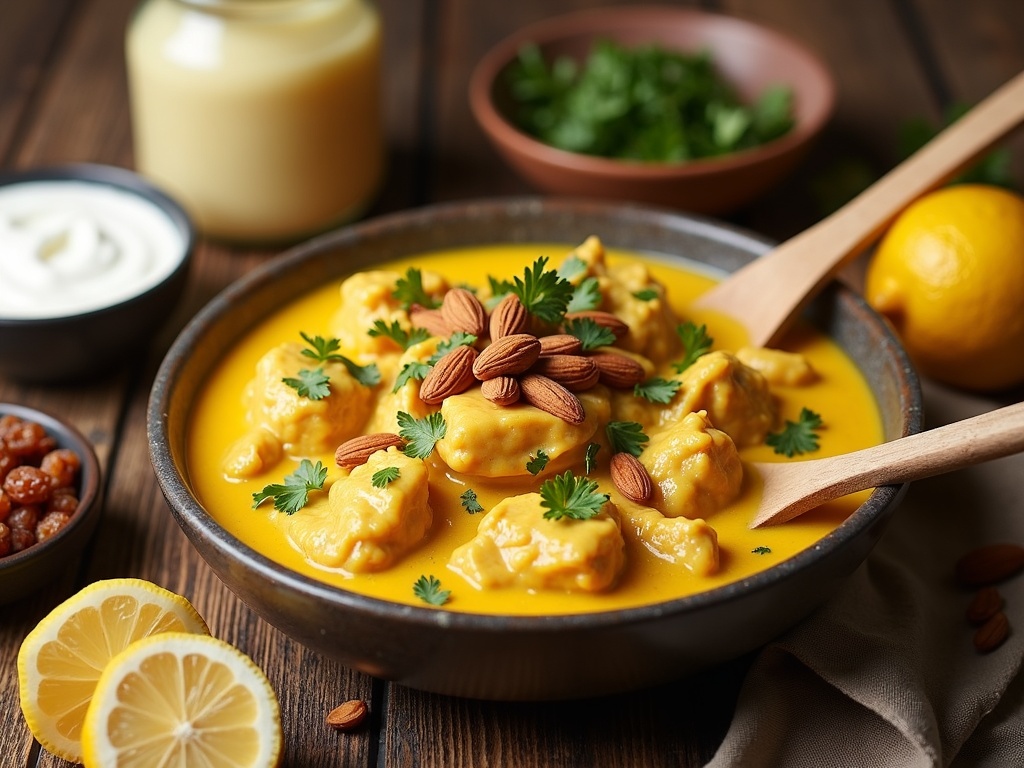
Creating Your Royal Masterpiece
The assembly of coronation chicken is where simplicity meets elegance. I start by shredding the cooked chicken into bite-sized pieces, making sure they’re substantial enough to hold the sauce but small enough to be easily enjoyed in each mouthful.
The magic happens when creating the signature sauce. I combine creamy mayonnaise with aromatic curry powder, tangy yogurt, and fresh lemon juice in a large mixing bowl. The ratio is important here – too much curry powder can overpower, while too little will leave your dish lacking that distinctive golden hue and warm flavor profile.
Once my sauce reaches the perfect consistency – smooth and easily pourable but not too runny – I gently fold in the chicken pieces. I take my time with this step, ensuring each piece of chicken is thoroughly coated with the vibrant sauce. The chicken preparation technique makes a difference in the final texture.
Adding the Final Touches
The addition of plump raisins brings necessary sweetness and textural contrast to the dish. I scatter them throughout, folding them in gently to distribute evenly. For those who enjoy extra texture, here are some optional additions that work beautifully:
- Toasted almonds for crunch
- Diced apricots for additional sweetness
- Finely chopped celery for freshness
- Red onion for a subtle bite
After mixing, the dish needs time for the flavors to develop. I cover the bowl and chill it in the refrigerator for a minimum of 30 minutes, though 2-3 hours yields even better results. This resting period allows the curry flavor to permeate the chicken fully.
Coronation chicken is best consumed within one day of preparation, as the fresh flavors begin to diminish afterward. I serve it slightly chilled rather than cold from the fridge – about 15 minutes at room temperature helps the flavors open up beautifully.
For serving, I either present it as an elegant sandwich filling, atop a chicken recipe inspired bed of lettuce, or alongside warm naan bread. A sprinkle of fresh herbs like cilantro or parsley adds a final touch of color and freshness that elevates this royal dish to true masterpiece status.
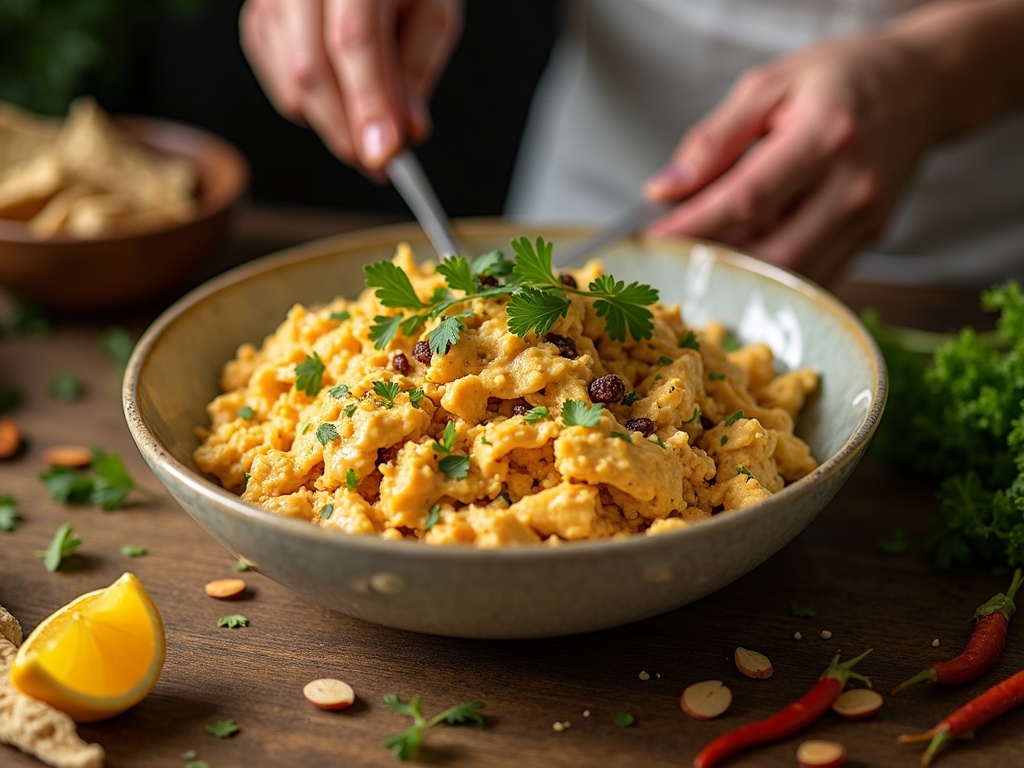
Making It Look Fit for Royalty
Coronation chicken deserves a presentation that honors its royal heritage. I’ve found that how you serve this dish can elevate it from a simple meal to something truly special. The vibrant yellow color creates an instant visual impact, but with a few simple techniques, you can make your chicken dish look spectacular on any table.
Classic Presentation Styles
Presenting coronation chicken on a bed of crisp lettuce creates an elegant foundation that complements the creamy texture. The contrast between the bright yellow chicken and the green leaves makes for a visually appealing plate. For a more casual option, it works beautifully as a sandwich filling, especially with wholemeal bread which adds a rustic touch.
Garnishing is key to that royal finish. A sprinkle of fresh cilantro or parsley adds color and freshness that cuts through the richness. For an authentic touch, serve alongside warm naan bread or pitta, perfect for scooping up every last bit of the delicious sauce.
When hosting guests, I create an elegant platter with various salad greens, the flavorful chicken mixture as the centerpiece, and small bowls of additional toppings like toasted almonds or raisins. This interactive serving style allows everyone to customize their portion.
Creative Serving Alternatives
Beyond the traditional presentations, coronation chicken offers versatility for modern menus:
- Wrap it in tortillas with fresh greens for a portable lunch option
- Serve as a topping for a substantial salad with mixed greens and cucumber
- Stuff into jacket potatoes for a hearty meal
- Use as a filling for vol-au-vents or pastry cases for elegant appetizers
- Layer in glass jars with rice and vegetables for picnics
- Spoon onto savory pastry bases for unique tartlets
The key to presentation is balance – you want the dish to look abundant without appearing messy. I arrange components with intention, using negative space to create visual interest. Fresh herbs aren’t just garnish; they’re an integral part of the visual appeal and flavor profile.
For family-style serving, a large, shallow bowl lined with lettuce creates an impressive centerpiece, while individual portions on small plates with careful garnishing offers a more refined approach for formal occasions.
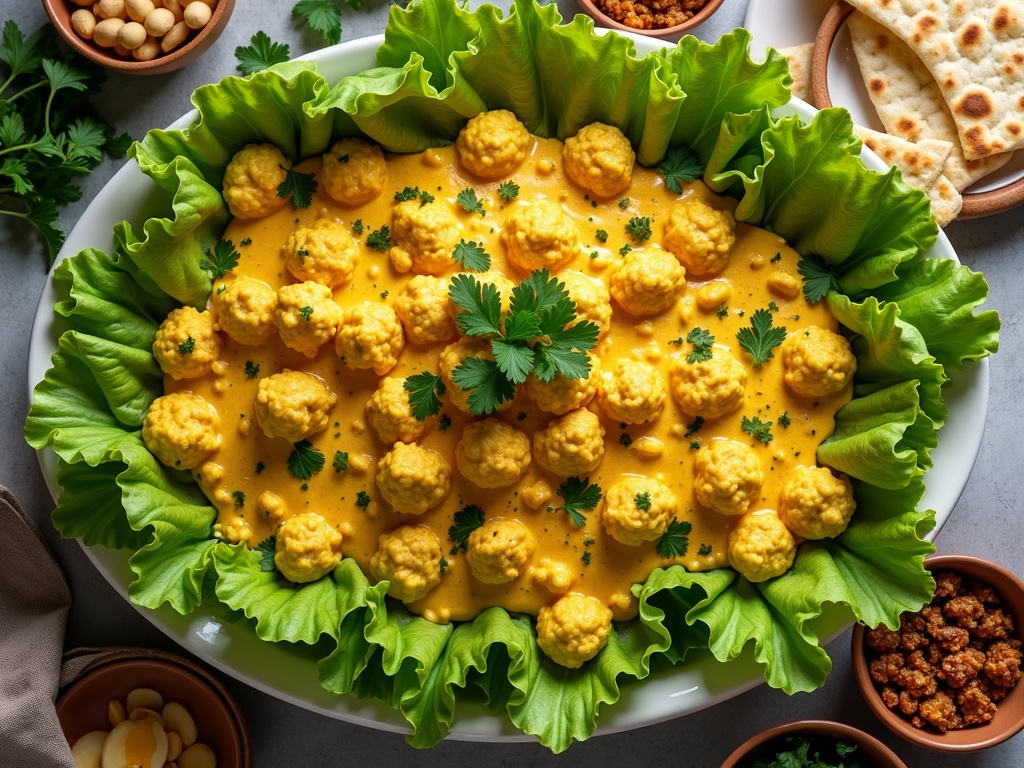
Nutrition and Health Notes
Coronation chicken is not just a royal favorite but also a balanced meal that offers a mix of proteins, fats, and carbohydrates. Each serving (based on four servings from the recipe) contains approximately 300 calories, making it a moderate option for lunch or dinner when paired with a side salad or bread.
Macronutrient Breakdown
The protein content in coronation chicken is impressive at 20g per serving, primarily coming from the chicken itself. Protein is essential for muscle maintenance and growth, making this dish a good option after workouts or for those looking to increase their protein intake. I find that homemade chicken stock adds depth to many chicken recipes while maintaining their nutritional value.
The fat content sits at around 20g per serving, which includes healthy fats from ingredients like mayonnaise and yogurt. These fats help with the absorption of fat-soluble vitamins and provide a feeling of satiety. The carbohydrate content is relatively low at 15g per serving, with approximately 10g coming from natural sugars found in raisins and other ingredients.
For those watching their sugar intake, the 10g of sugar per serving mostly comes from the raisins, which also provide beneficial fiber and micronutrients. If you’re looking to reduce the sugar content, you can adjust the amount of raisins without significantly affecting the classic taste of the dish.
This recipe strikes a nice balance between indulgence and nutrition. The creamy texture might make you think it’s calorie-heavy, but when made with Greek yogurt and light mayonnaise, it becomes a healthier option than many other creamy chicken preparations like chicken carbonara or chicken pie.
For those looking to boost the nutritional profile even further, adding extra vegetables like cucumber, celery, or bell peppers can increase the fiber content while adding minimal calories. The mild curry flavors in coronation chicken also pair beautifully with garlic chicken seasonings for a fusion variation that maintains the health benefits.
Remember that these nutritional values are approximations and may vary depending on specific brands of ingredients used and exact portion sizes.
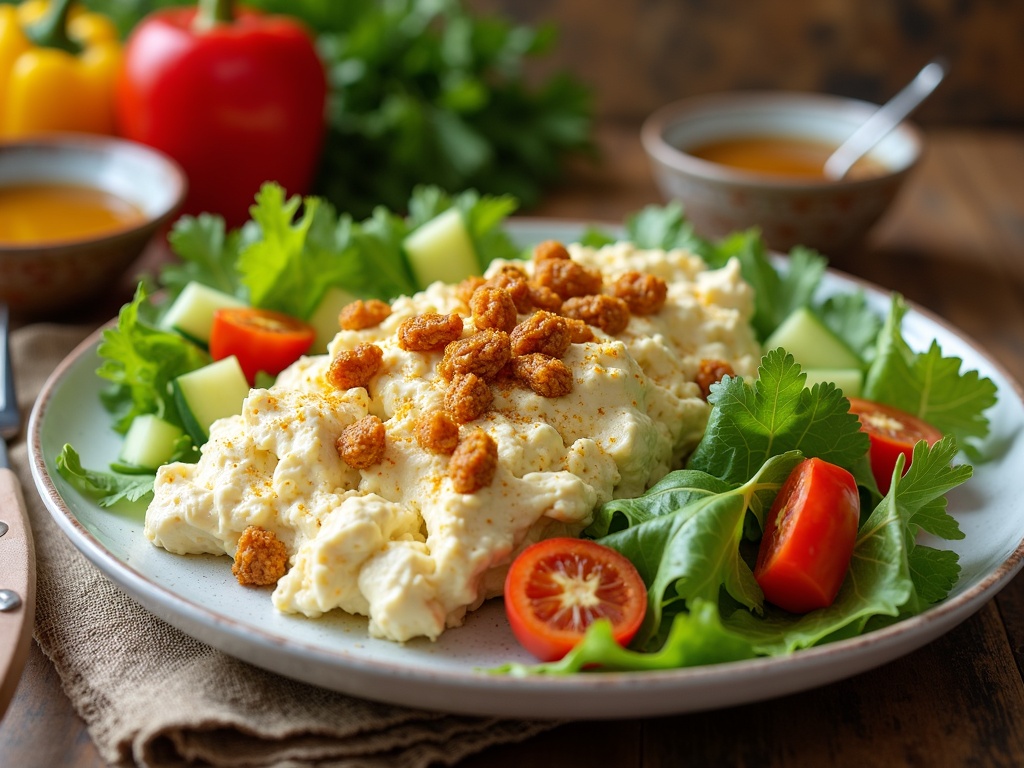
Sources:
British Food Trust – A Taste of History: The Origins of Coronation Chicken
The Royal Kitchen – An Exploration of Royal Recipes
Food History Journal – Heritage of British Cuisine

